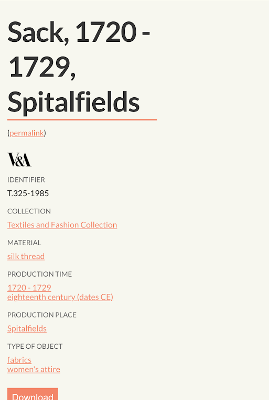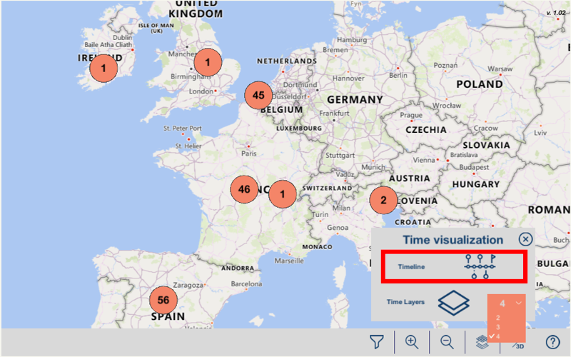Thank you for participating in the evaluation of the SILKNOW tools! On this page you will find the manual, instructions and the survey of the Virtual Loom and ADASilk. Bonus track if you are a museum professional and help us evaluate the multilingual thesaurus.
Please note that this is a work in progress, this is the beta phase of our tools, with your help we can improve them!
- Virtual Loom Manual
- Training
- Survey
- Virtual Loom online
- Standalone version: MAC – WINDOWS
- ADASilk Manual
- Training
- Survey
- ADASilk
Virtual Loom
Please, follow the next steps in the indicated order:
- Download the Virtual Loom (desktop version) as it is explained in the online manual
- Run the Virtual Loom (desktop version).
- Produce a 3D model with the “damask” technique for the sample image that you have downloaded in step 2. You might apply a symmetry function. Take into consideration 2 zones and use default settings.
- Go to “Image Processing” tab, and change the technique to “espolín”. Take in consideration 4 zones and use default settings to produce a 3D model

- Export the produced espolín to a file in STL format. You can store it on your computer.
- Produce a 3D model with the “damask” technique for the sample image that you have downloaded in step 8. Take in consideration two zones. Don’t use the default settings, but change the types colors of the background and pictorial part, and weave.
- Rotate the model 180º. You can perform other rotations to better inspect the model.
- Explore the produced 3D model by changing its resolution. Leave it in “high”
- Export the result in STL format. You can store it on your computer.
- TASK: Suppose you would like to use an image (any kind of image) to produce a fabric-like representation. You can select one image you have at your computer, look for an image on the web, or even explore ADASilk to select an image. Use the Virtual Loom for producing a 3D representation of an object, change the resolution for comparing the results. Explore what technique and how many colors are optimal for your case, in order to produce a beautiful 3D model.
ADASilk
Please, follow the next steps in the indicated order:
- Have a look to the online manual
- Access ADASilk: https://ada.silknow.org/
- Click in OBJECTS
- Search for Damask in the main search bar “Text Search”
- Filter the results using “Production Time” and set “eighteenth century”
- Further filter the results using “Type of Objects” and set “fabrics”
- Select the object you prefer
- Look at the object information and click on one of the links on the right

- Turn back to the previous page, and download the image
- Turn back again to the previous page, the main page of ADASilk/OBJECTS (as in step 3). Clear all the filters. Filter by “Technique” selecting “Damask”, and filter by “Material” selecting “Metal Thread”. You should obtain something similar to:
- Toggle to the map. You should see something similar to:
- Zoom in the United Kingdom and Ireland, to see the resulting objects in more detail. You should see something similar to this:
- Click in one of the objects, to see the relationships in numerical form
- Open the details of the object and select “Show Relationships” for TIME. You can explore the map by zooming out. When you finish, unselect the TIME relationship.
- Zoom to see the entire Europe
- See the evolution of these objects through time

- See the evolution of these objects in the time layers

- In the map, toggle the filters. Filter by “Material” selecting one of the filters. You can test other filters

- TASK: Among the most common decorative motifs in velvet, we find floral patterns. Use ADASIlk to research how decoration applied to this specific weave evolved in Italy. Compare your research results, save them if necessary (login is needed), and explore these velvets’ temporal evolution between the 15th and 20th centuries.